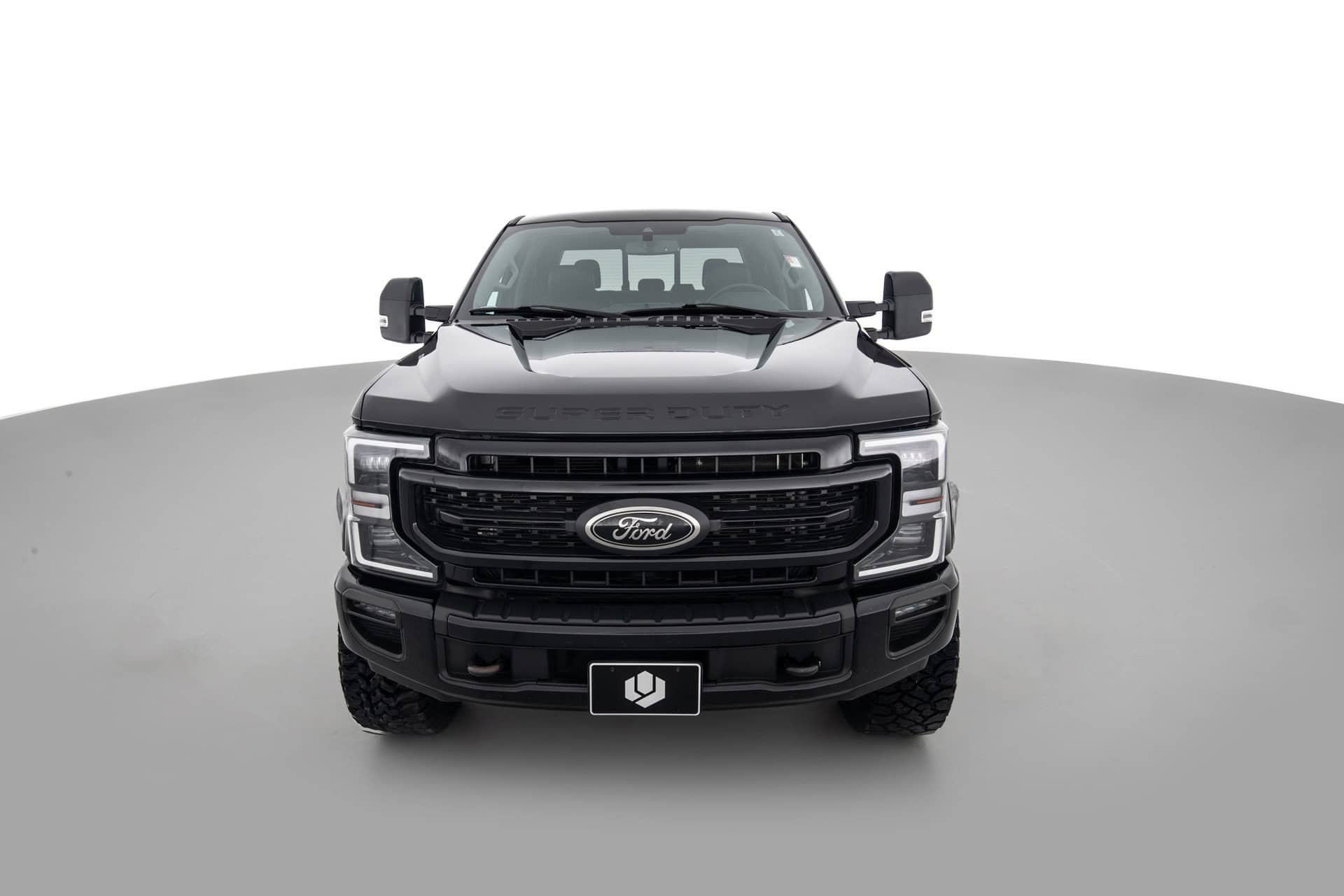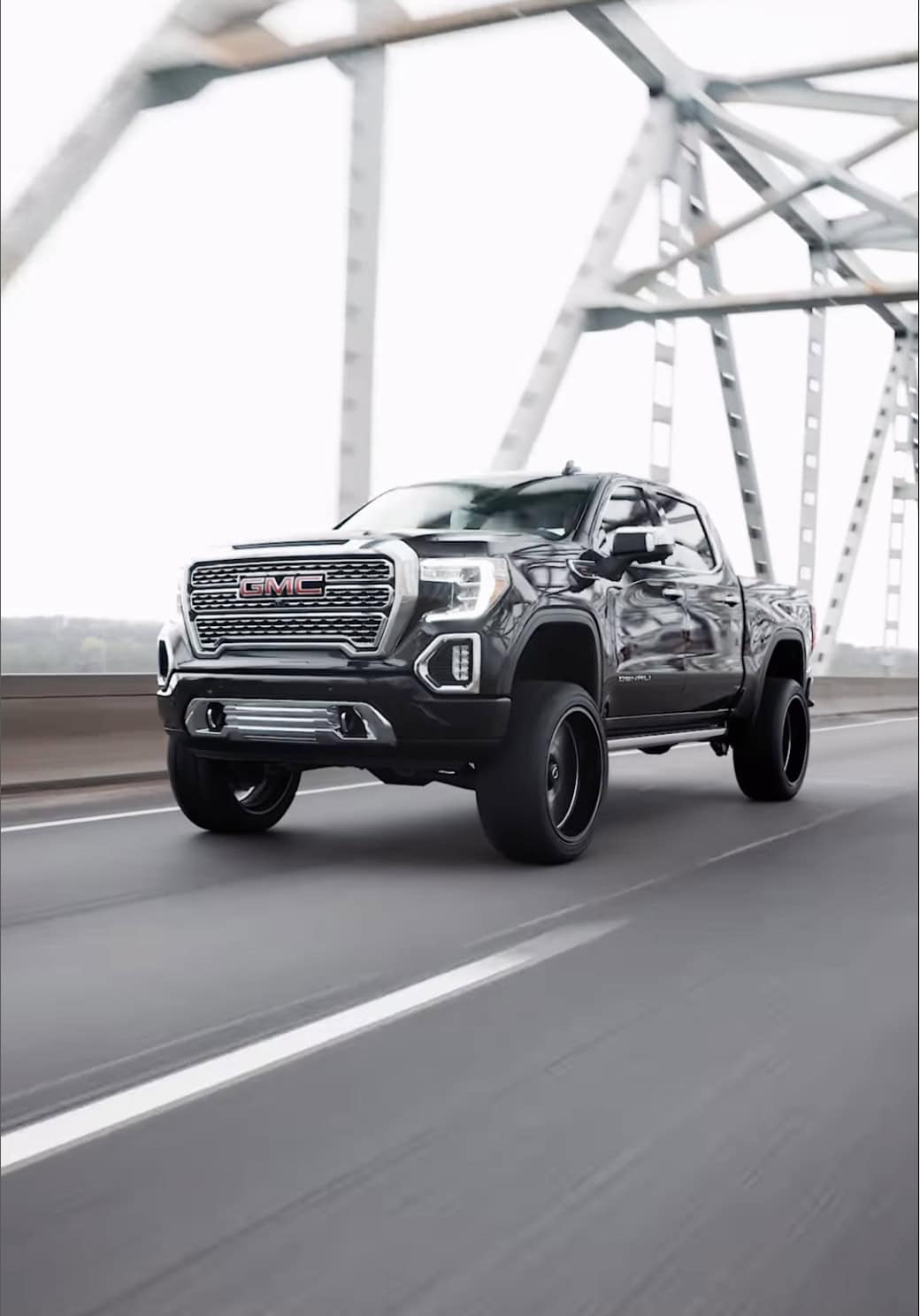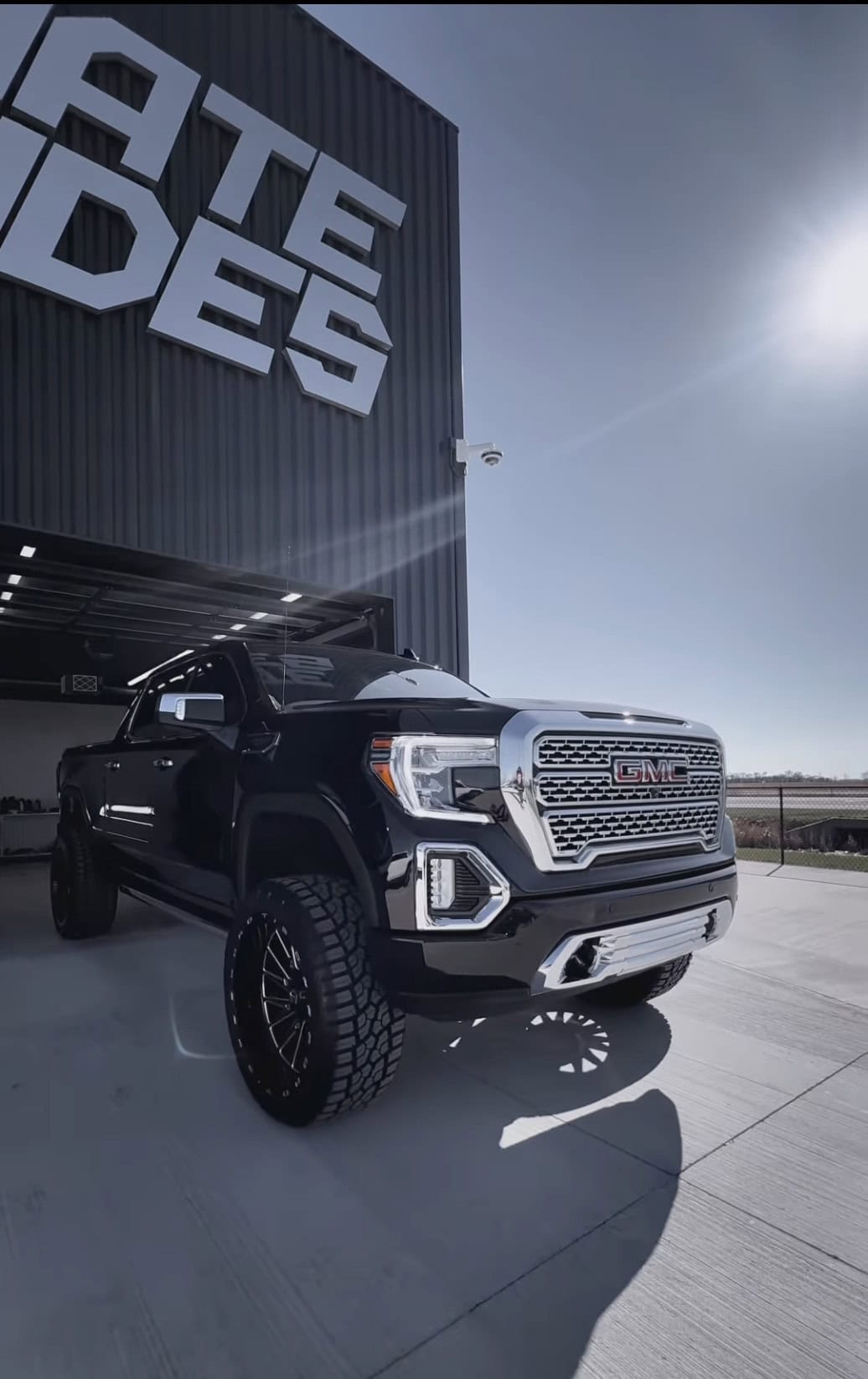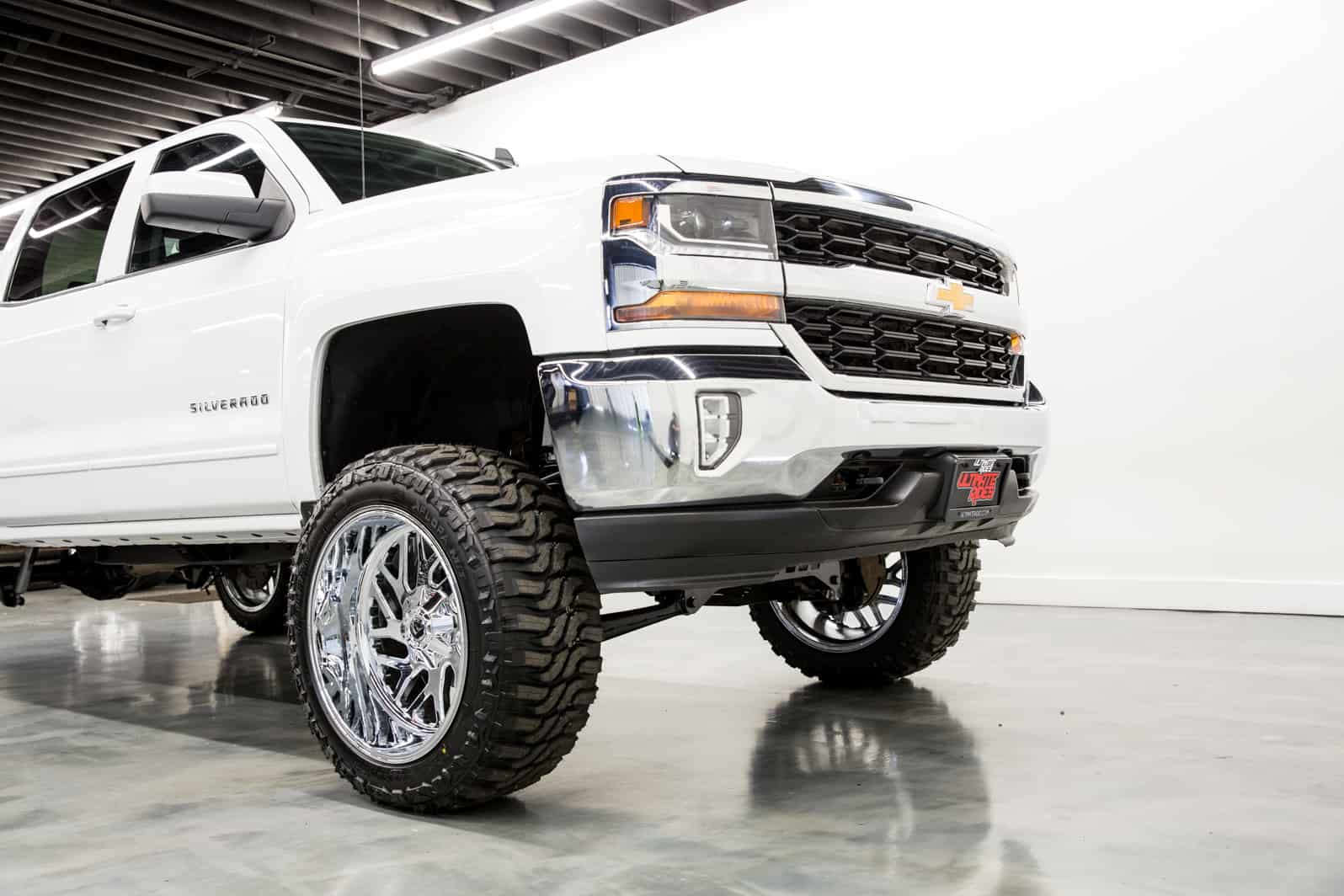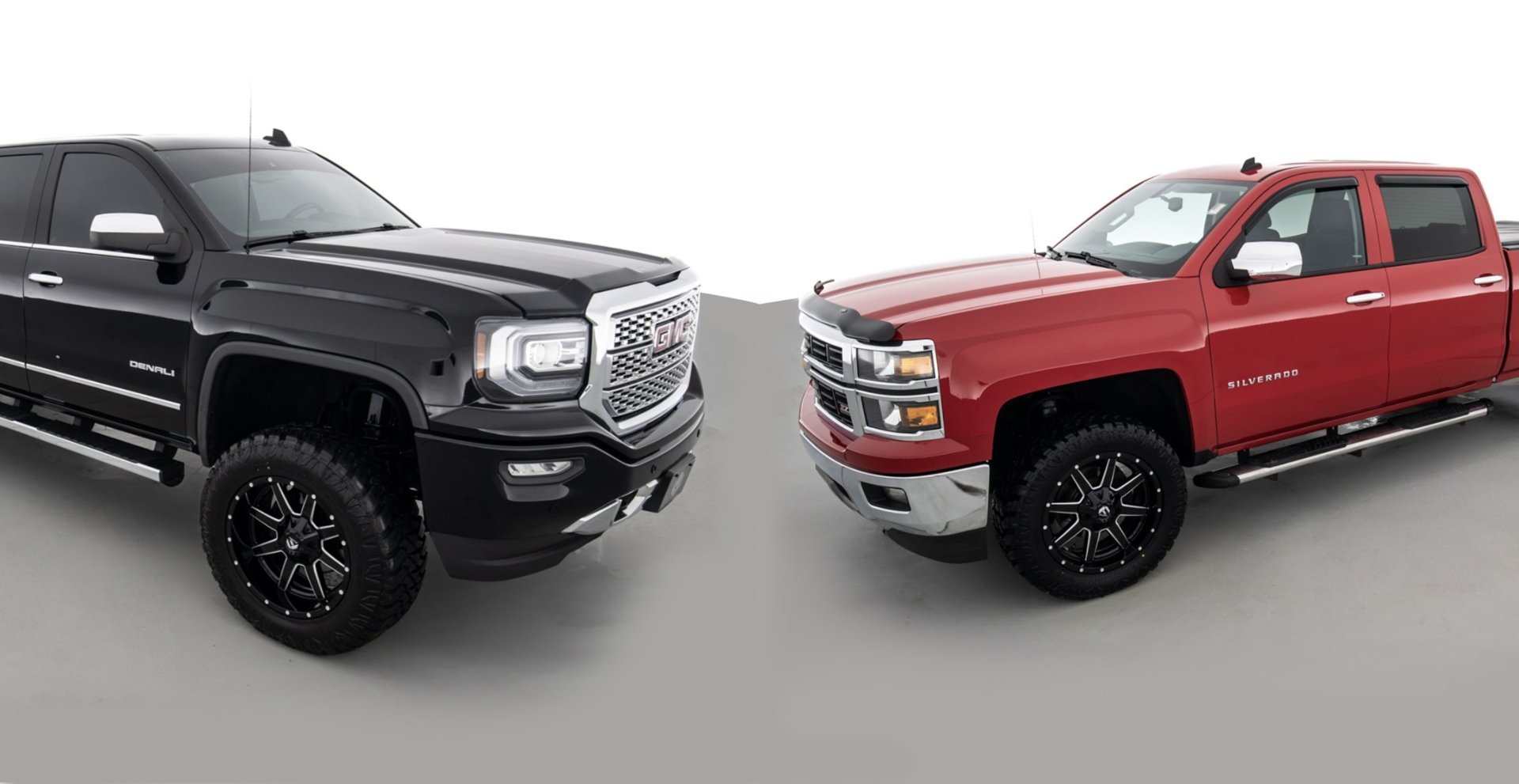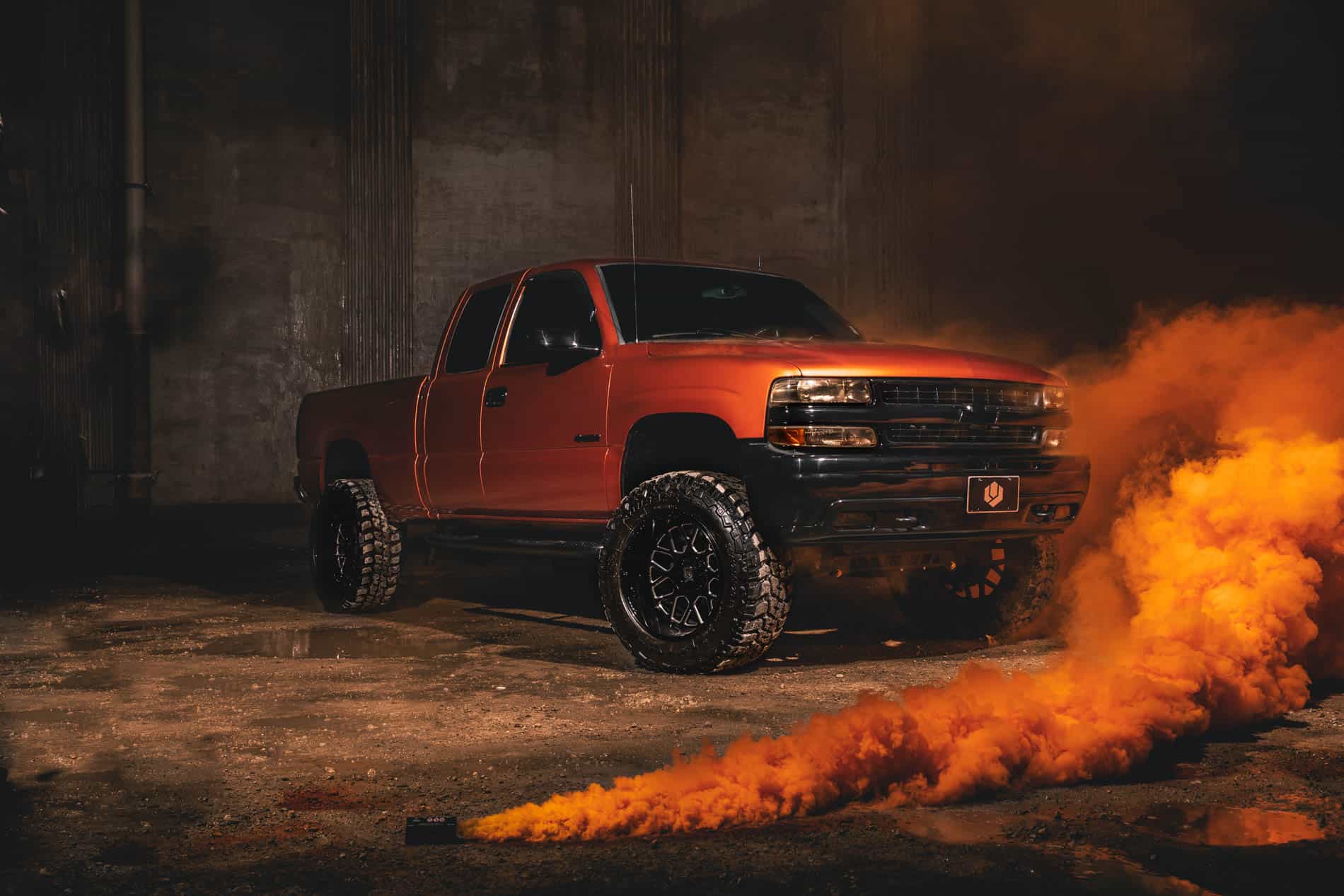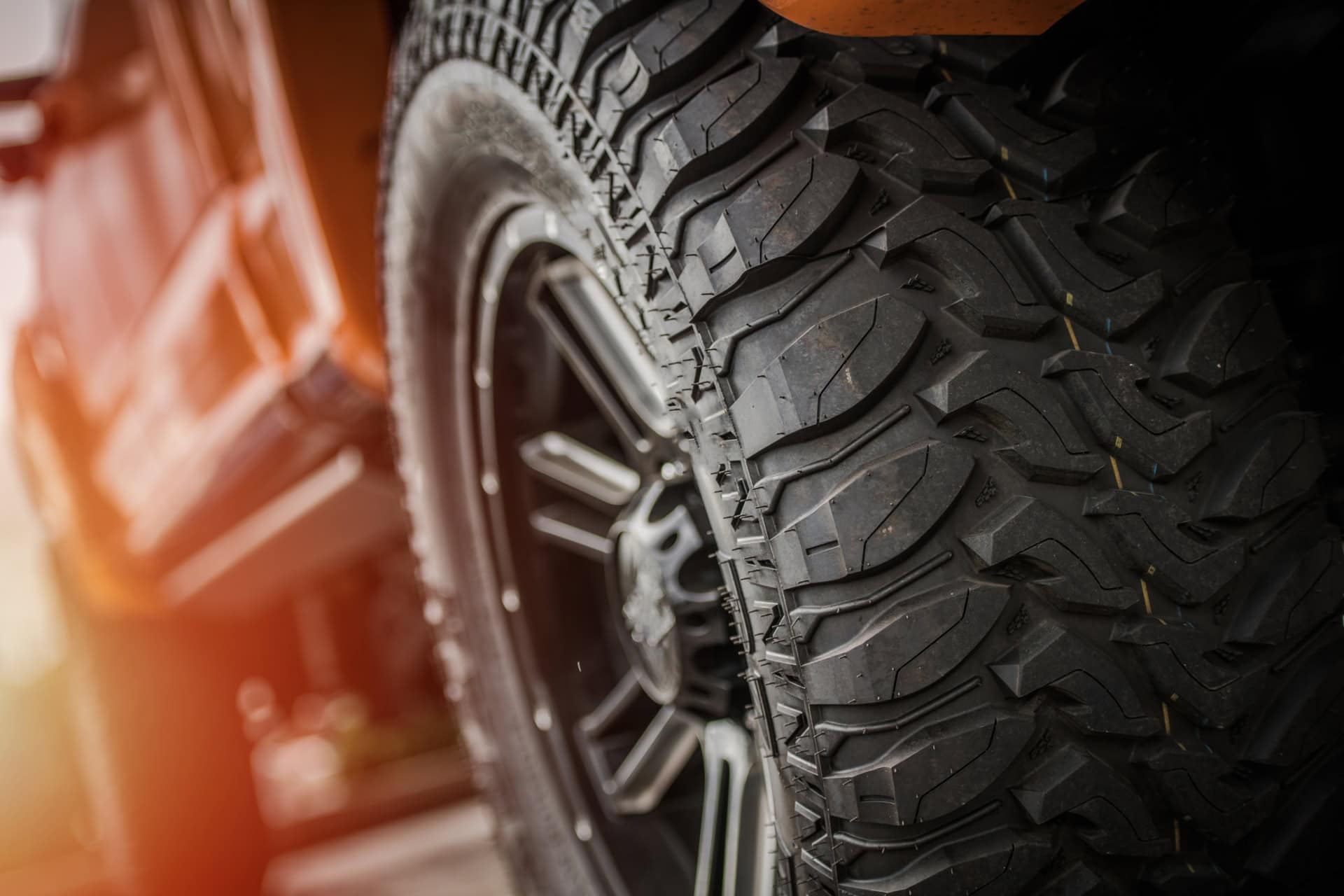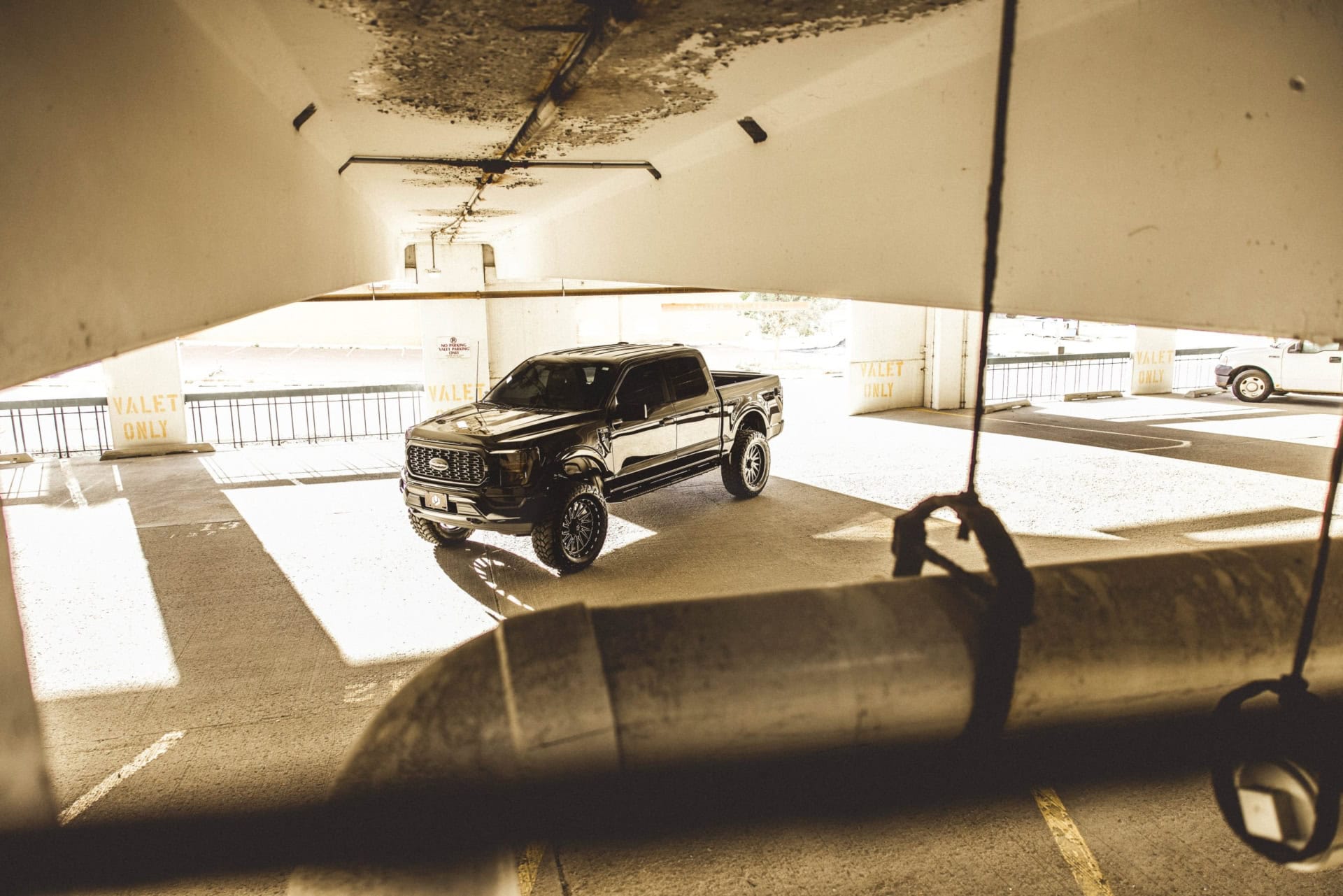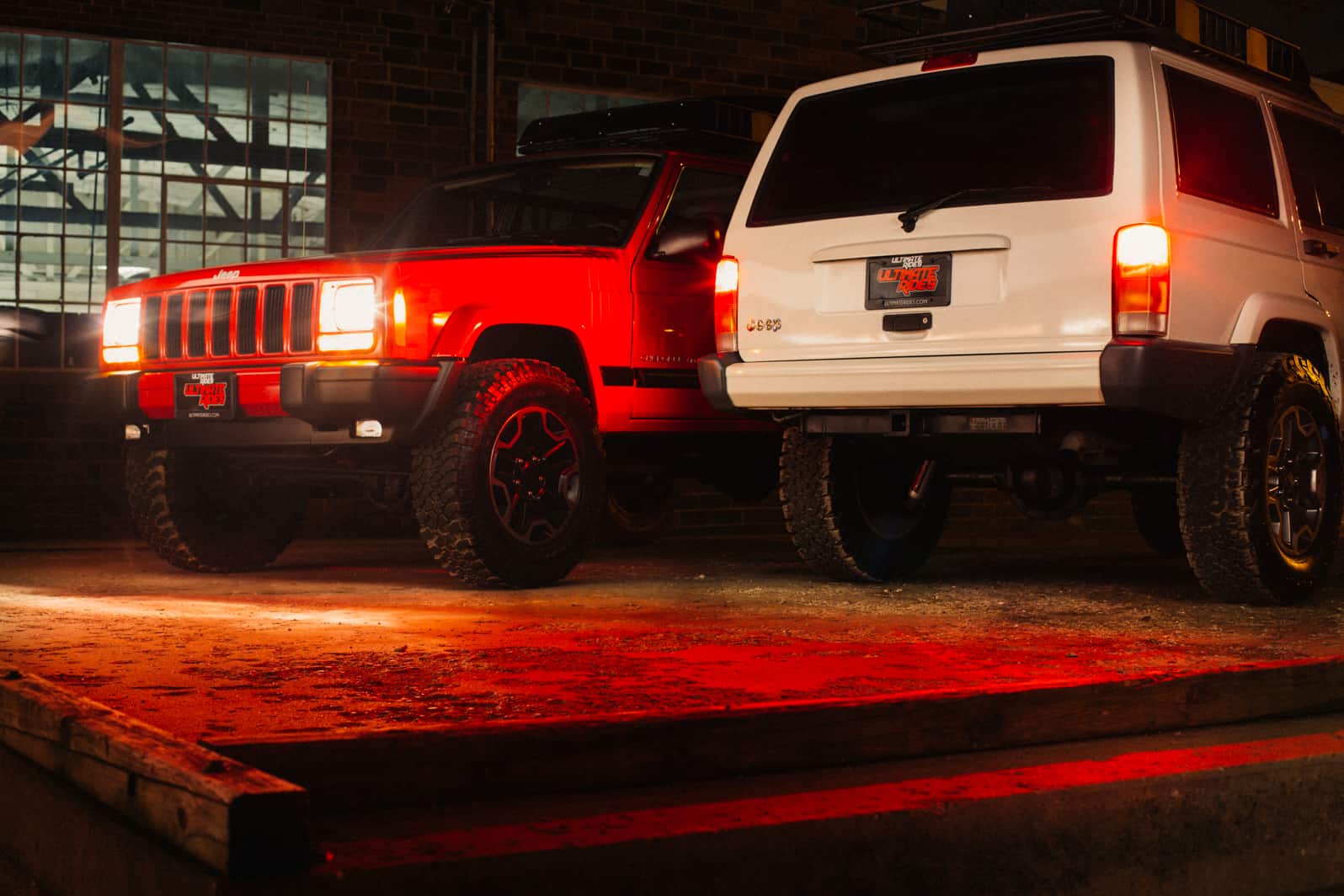Trucks come in all shapes and sizes. After all, that’s what makes them such a fun ride. But nothing catches the eye quite like a lifted truck. Built for cruising down the highway and tackling rocky trails – but equally at home around the city – custom-lifted build trucks have a way of grabbing your attention.
Aside from the bold, striking appearance, there’s a deeper reason why enthusiasts choose to modify their trucks, and through this article, we will explain what that is. But more importantly, what is a lifted truck, and why do people lift trucks in the first place? We will cover that, too – just for anyone who might be unfamiliar.
Why Lift a Truck?
Despite common belief, lifting a truck isn’t about aesthetics alone. They are a highly functional upgrade that improves performance in specific driving conditions, mostly for better off-road handling and improved visibility.
Either way, a lifted truck can transform a driver’s experience of the road (or lack thereof). Let’s go ahead and take a closer look at how a lift kit for a truck changes performance, improves driving, and why so many truck owners swear by it.
But first, the important details – what is a lifted truck, in practical terms?
What Does ‘Lifting a Truck’ Mean?
Lifting a truck simply involves modifying the suspension or body to increase the vehicle’s ground clearance. There are two main ways to do this: body lifts and suspension lifts.
There are key differences between a body lift vs suspension lift, with each serving a distinct purpose. Although they achieve a higher ride height, they serve slightly different purposes and have distinct advantages.
- Body Lift: This method raises the truck’s body higher off the frame using spacers or blocks. It allows for larger tires but doesn’t make any difference to suspension travel or off-road capability.
- Suspension Lift: A more stacked-out modification, a suspension lift increases ground clearance by replacing or modifying suspension components like shocks, struts, and control arms. Ultimately, this gives much better off-road performance and greater wheel articulation.
So, why lift a truck? The reasons vary from driver to driver, but most modifications are done to improve off-road ability, add some grunt to the towing performance, or simply create a more commanding, eye-catching presence on the road.
If you were to ask a bunch of owners why people lift trucks, most would candidly admit they did it because they look so gnarly, confident, bold, and just so much fun to ride high.

Enhanced Off-Road Capabilities
If you have ever taken a stock truck off-road, you will be familiar with the struggle. Scraping against rocks, bottoming out in deep ruts, or getting stuck in the mud isn’t fun in the slightest. This is where a lift kit for a truck makes all the difference.
Raising the suspension means amazing ground clearance. This allows the truck to roll over obstacles instead of getting caught in them. But the benefits don’t stop there.
Improved Off-Road Approach
Lifting a truck also improves approach, departure, and breakover angles. These are three highly critical factors for navigating rough terrain, and without them, you might find yourself in a tough spot.
Essentially, the steeper the approach angle, the easier it is to climb over a rock or ledge without smashing the front bumper. A better departure angle helps prevent the rear from dragging, and a higher breakover angle means the truck can crest a hill without scraping its undercarriage.
Off Road Grip
Then there’s tire size. As you already know, bigger tires simply mean better traction, especially in mud, sand, or loose gravel. So why lift a truck if bigger tires will do much of the work? Because apart from ground clearance, a lifted truck can accommodate oversized tires, giving it more grip and stability in harsh conditions.
Improved Visibility
Ever been stuck behind a lifted truck in traffic and thought, Man, I can’t see a thing? That’s because, once again, lifted trucks sit much higher, offering a better vantage point of the road. Many owners simply enjoy the pleasure of towering over everyone – and that’s a perfectly suitable reason – but being so high also has real safety advantages.
A higher driving position makes it easier to spot potential hazards, such as debris in the road, brake lights ahead, or wildlife darting out unexpectedly from the side. Truck owners who haul trailers also enjoy the extra height, as it provides a much clearer view of what’s happening all around them.
That said, while the improved view is definitely a perk, it’s also worth noting that a lifted truck might create blind spots, especially for smaller vehicles. That’s why proper mirror adjustments and backup cameras are a must-have.

Aesthetic Appeal
Aside from those important points, a lifted truck also looks pretty great. Raising a truck instantly changes its entire profile, giving it a taller, more aggressive stance. Even if just parked at a stoplight, it’s the kind of vehicle that turns heads.
Personalization is also a big factor. Some drivers choose a clean, minimal lift to fit larger tires without changing too much. Others like to push the limits with custom off-road vehicles, choosing high suspension lifts, oversized wheels, custom grilles, and aftermarket lighting.
The options are nearly endless, and that’s what makes lifted trucks so much fun to own. They are an extension of the owner’s personality in many ways.
Why else do people lift trucks? Well, that cool ‘off-road-ready look’ is another big reason. Even if a truck never leaves the pavement, the raised suspension, rugged tires, and beefed-up stance give it a beautifully tough, no-nonsense presence.
Towing and Hauling Benefits
Getting a nice new lift kit for a truck isn’t just about aesthetics or off-roading, however. Towing and hauling performance is greatly increased. While many stock trucks are built to handle heavy loads, lifting the suspension (with the right lift truck upgrades) helps with:
- Weight distribution: A suspension lift helps balance the load when towing, reducing the strain on specific parts of the truck.
- Rear-end sag reduction: Extra weight from a trailer can push the back end down, raising the front and making the steering feel loose. A lifted suspension helps keep the truck level.
- Better clearance: Greater height allows for safer towing of gooseneck and fifth-wheel trailers, which will help avoid scraping on uneven terrain.
- Improved handling: With upgraded shocks and springs, a lifted truck maintains stability, especially on those bumpy roads.
Aside from horsepower, good towing is about solid, confident control. With a poor suspension setup, heavy loads can throw off handling, causing sketchy breaking and sluggish steering. Lifting the truck and upgrading key components creates a smoother and safer experience when pulling equipment, livestock, or an RV.
Accessibility for Maintenance
Ever tried crawling under a stock truck to check for leaks or swapping out a fuel filter? You will know it’s a tight fit, to say the least. Raising a truck makes routine maintenance much easier, especially for DIY mechanics who prefer handling repairs themselves.
With more ground clearance, checking the undercarriage, inspecting suspension components, and performing oil changes becomes much easier. There’s no need for ramps or jacks, as there’s already room to work. This extra space also benefits professional mechanics, making it faster to diagnose and repair issues without squeezing into tough angles.
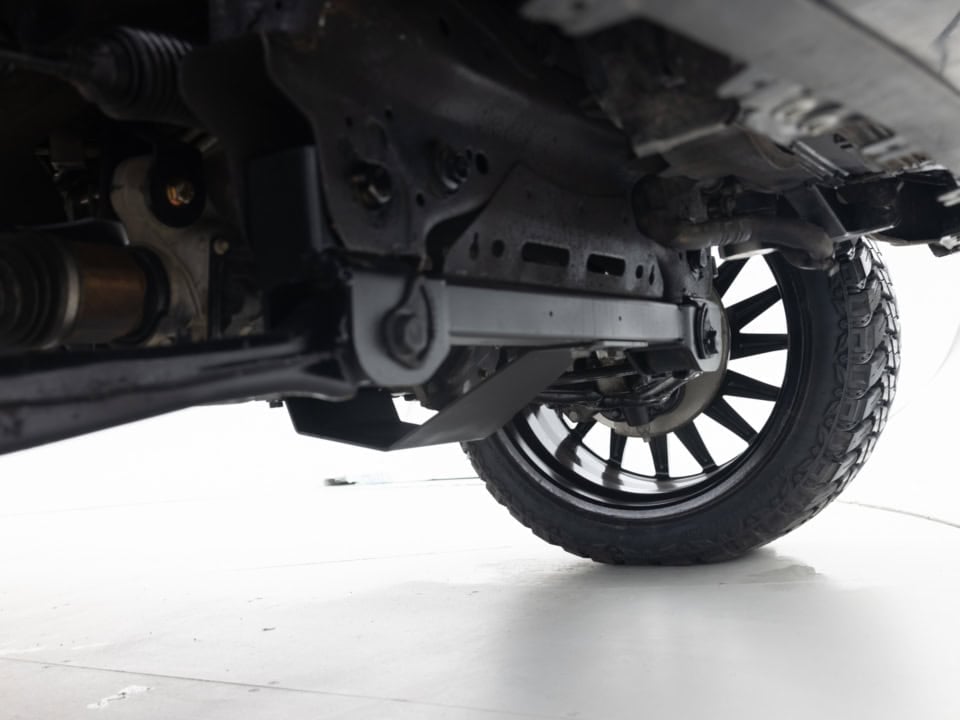
Less Damage Potential
Plus, a lifted truck means less risk of damage to vital components like the oil pan, fuel tank, and exhaust system. Instead of scraping against rocks or tree roots, these parts stay protected, reducing wear and tear over time.
That added room is one reason why ‘what is a lifted truck’ has become such a common question among new truck owners. People these days simply prefer more clearance.
Considerations and Potential Drawbacks
While all of these features are good enough reasons to invest in this type of vehicle, there are pros and cons of lifting a truck. As with any vehicle purchase, there are trade-offs to consider. A lift kit for a truck offers benefits like better ground clearance and off-road capability, but it also comes with challenges that might not suit every driver.
Let’s take a look at a few more:
Changes in Handling
One of the biggest adjustments for first-time owners of a lifted truck is the way it drives.
- A higher center of gravity can make sharp turns feel less stable.
- Stopping distances may increase due to the added weight and larger tires.
- Wind resistance plays a bigger role at highway speeds, which can affect handling.
Legal and Regulatory Issues
Before installing a lift kit, it’s worth checking local laws. Some states have height restrictions on lifted trucks, limiting how high a truck can sit before it’s considered illegal.
- Bumper height regulations: Some states have rules on how high bumpers can be lifted.
- Headlight positioning: If lights are raised too high, they can blind oncoming traffic.
- Inspection requirements: Certain areas require lifted vehicles to pass additional safety inspections.
Fuel Efficiency and Ride Comfort
Bigger tires and a taller frame mean more drag, which can lower fuel economy. So why do people lift trucks if it impacts fuel efficiency? For many, the trade-off is worth it, but it’s important to be aware of:
- More rolling resistance: Larger tires require more energy to move.
- Extra weight: A lift kit for a truck adds weight, which affects MPG.
Ride stiffness: Some suspension lifts result in a firmer ride, making long drives less comfortable.

Why Professional Installation Matters
A poorly installed lift kit usually leads to alignment problems, uneven tire wear, and safety risks. That’s why professional lift kit installation is strongly recommended, especially for suspension lifts that involve complex modifications.
Here’s a quick comparison of what to expect when lifting a truck:
Aspect Comparison |
||
|---|---|---|
| Aspect |
Advantage |
Drawback |
| Ground Clearance |
Better off-road performance |
Harder to enter/exit |
| Towing Stability |
Improved weight distribution |
Potential need for upgraded suspension |
| Visibility |
Higher driving position for a better view |
Larger blind spots |
| Handling |
More clearance over obstacles |
A higher center of gravity affects stability |
| Fuel Economy |
No direct improvement |
Increased fuel consumption due to weight |
| Legal Restrictions |
No issue if within legal limits |
Some states have strict height and bumper laws |
Bottom Line
So, what is a lifted truck really about? For some people, it’s the fantastic off-road capability. For others, it’s the unmistakable look that sets their ride apart from others (and, let’s face it, modern vehicles are all starting to look the same). For those of you who tow heavy loads, the added stability can be a factor, also.
But remember, lifting a truck isn’t something to do on a whim. It affects handling, fuel consumption, and even legal requirements in some areas. Whatever your reason, from considering a mild lift for daily driving or a full suspension upgrade for serious off-roading, you need to weigh the pros and cons carefully.
Still wondering why to lift a truck? Try looking at it this way; the answer really depends on what you want out of it. A lift can improve ground clearance, make towing easier, and provide a commanding view of the road. But choosing the right setup – and getting it installed properly – is just as important as the lift itself.
Thinking About Lifting Your Truck? Here’s What’s Next
If you’re ready to give your truck more height, better handling, or a custom look, it’s worth getting the job done right.
- Choose the right setup: Body lift or suspension lift? It depends on whether you’re after style, performance, or both.
- Check local regulations: Every state has different rules on how high a truck can be lifted.
- Get a professional installation: A poorly installed lift kit for a truck can lead to uneven tire wear, poor alignment, and safety issues.
Take a closer look at our lifted trucks for sale and decide what works for you!
